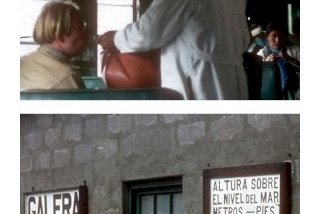Peru
Peruvian Central Railway
Site Info
Official Information
- Full Name
- Peruvian Central Railway (ID: 6416)
- Country
- Peru
- Status
-
On tentative list 2019
Site history
History of Peruvian Central Railway
- 2019: Added to Tentative List
- Added to tentative list
- Type
- Cultural
- Criteria
Links
- UNESCO
- whc.unesco.org
All Links
UNESCO.org
- whc.unesco.org — whc.unesco.org
Community Information
- Community Category
- Human activity: Transport and Trade
Travel Information
Recent Connections
News
No news.
Recent Visitors
Visitors of Peruvian Central Railway
- basementonline
- Carlos Sotelo
- Christravelblog
- Daniel Chazad
- Daniel Gabi
- Delphine Delaunay
- Francky D'Hoop
- Frédéric M
- Frederik Dawson
- Joel on the Road
- Kasper
- Kevin McFarland
- Mathijs
- Pchxiao
- Philipp Peterer
- Pink Bunny
- Priyaranjan Mohapatra
- Riccardo Quaranta
- RYU
- Shandos Cleaver
- Solivagant
- Thomas Buechler
- Wojciech Fedoruk
- Xiquinho Silva
Community Reviews
Show full reviews
The inclusion of the “Ferrocarril Central Andino” on Peru’s T List in Aug 19 has led me to revisit my trip on it from Lima to Huancayo made way back in Dec 1973. Doing so has provided evidence of just how much has changed across those 45+ years!
I have looked out my faded diary and discovered that I booked the train at the Desamperados station the previous evening for 70 Soles - the same cost as the night at my nearby, somewhat downmarket, hotel (c $1.60 at the then exchange rate of 43!). The train left on time at 07.40 and chugged into Huancayo 9hrs 35mins later (where my hotel cost me 115 Soles/$2.67!). Starting at c150m/500ft. the journey divided into a number of sections – grotty Lima suburbs which, even in those days, seemed to extend for ever, along the fertile Rimac valley, then the real climb which started at around 54kms at Chosica and continued up to the highest point at Galera tunnel and station (4781m/15681ft/c175kms), followed by a drop to the ugly mining town of La Oroya (3,745m/12,287ft/c200kms) and then a level journey of c120kms wending its way through altiplano landscape to Huancayo (3,259m/10,692ft). The next day I started a 2 day bus journey to Cuzco via Ayacucho over what, in those days, were very rough roads.
The passengers were mainly locals, plus a few "gringos", and in nearly every respect the train provided a "normal" service with no special features for …
Keep reading 0 comments